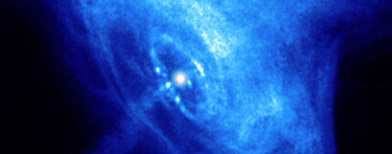Remember that "anti-matter" stuff?
A step closer to understanding the universe
Scientists trap elusive antimatter and hope to begin tests on the particles soon
Ephemeral Antimatter Trapped for Amazingly Long 16 Minutes
Antimatter, an elusive type of matter that's rare in the universe, has now been trapped for more than 16 minutes — an eternity in particle physics.
In fact, scientists who've been trapping antihydrogen atoms at the European Organization for Nuclear Research (CERN) in Geneva say isolating the exotic particles has become so routine that they expect to soon begin experiments on this rare substance.
Antimatter is like a mirror image of matter. For every matter particle (a hydrogen atom, for example), a matching antimatter particle is thought to exist (in this case, an antihydrogen atom) with the same mass, but the opposite charge.
That's got to be a physicist's dream come true, doesn't it?
First, to be able to trap it, finally.
Second, to be able to trap and keep it for as long as 16 minutes.
And then, finally, to be able to start "tests" on this stuff?
Reminds me of the song "How do you solve a problem like Maria?"
Here's the fascinating, heady stuff:
Trapping antimatter is difficult, because when it comes into contact with matter, the two annihilate each other.
At one time, it was thought that if we ever did try to trap anti-matter, it might bring the end of the world, if not the universe, because of the explosion.
It gets better. Here's more:
"...a container for antimatter can't be made of regular matter, but is usually formed with magnetic fields."
That is some pretty cool stuff.
So this is how they do it:
In the ALPHA project, the researchers captured antihydrogen by mixing antiprotons with positrons — antielectrons — in a vacuum chamber, where they combine into antihydrogen atoms.
The whole process occurred within a magnetic "bottle" that takes advantage of the magnetic properties of the antiatoms to keep them contained. An actual bottle, made of ordinary matter, would not be able to hold antimatter because when the two types of matter meet they annihilate.
After the researchers had trapped antimatter in the magnetic bottle, they could then detect the trapped antiatoms by turning off the magnetic field and allowing the particles to annihiliate with normal matter, which creates a flash of light.
Now, the question becomes, what test or tests do you do on anti-matter?
Do you poke it? (kidding)
Do you shine light on it? Heat it? Throw things at it?
What?
Stay tuned, science fiction fans.










2 comments:
This can't end well.
Sounds as though you figure we'll be blown to smithereens?
Post a Comment